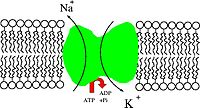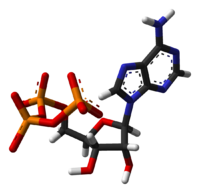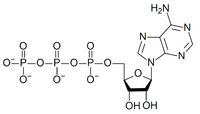The nature of human intelligence is a popular and fascinating subject. While I've commented on other blogs on the subject, I haven't written about it here before. The just-released paper Brain Anatomical Network and Intelligence (by Yonghui Li, Yong Liu, Jun Li, Wen Qin, Kuncheng Li, Chunshui Yu, and Tianzi Jiang) provides a fine entré.
This paper reports "extensive analyses to test the hypothesis that individual differences in intelligence are associated with brain structural organization, and in particular that higher scores on intelligence tests are related to greater global efficiency of the brain anatomical network." As for the results:
Based on their IQ test scores, all subjects were divided into general and high intelligence groups and significantly higher global efficiencies were found in the networks of the latter group. Moreover, we showed significant correlations between IQ scores and network properties across all subjects while controlling for age and gender. Specifically, higher intelligence scores corresponded to a shorter characteristic path length and a higher global efficiency of the networks, indicating a more efficient parallel information transfer in the brain. The results were consistently observed not only in the binary but also in the weighted networks, which together provide convergent evidence for our hypothesis. Our findings suggest that the efficiency of brain structural organization may be an important biological basis for intelligence.13
Mapping the Connections in the Brain
But what does this mean? To understand that we have to back up a little and look at how the brain is organized. The cerebral cortex can be divided into a number of areas, based originally on the work of Korbinian Brodmann, updated since then. These areas can be subdivided, based on various differences (between sub-areas), including observed or expected differences in how they are interconnected with other areas.
Beneath the "grey matter" of the cerebral cortex lies the "white matter" of the myelinated axons that connect the cortical areas (and sub-areas) with one another and with deeper parts of the brain. The connections made by these axons can be mapped, using the technology of Diffusion tensor imaging (DTI), a very new technique.

Figure 1: Tractographic reconstruction of neural connections via DTI. (From Wiki.)
In this technique, Magnetic resonance imaging is used to determine the principle direction of myelinated axons within each tiny pixel (AKA voxel: typically a cubic millimeter or so) within the brain's "white matter", and the vectors (directions) are followed from right under one cortical spot to where they land at another. There are various methods for this process, called Tractography:9
Currently, there are several different approaches to reconstruct white matter tracts, which can be roughly divided into two types. Techniques classified in the first category are based on line propagation algorithms that use local tensor information for each step of the propagation. The main differences among techniques in this class stem from the way information from neighboring pixels is incorporated to define smooth trajectories or to minimize noise contributions. The second type of approach is based on global energy minimization to find the energetically most favorable path between two predetermined pixels.9
Issues with DTI
The method used in Li et al.13 depends on assigning a single pixel to a single fiber, and cannot resolve crossing fibers. In fact, the nerve connections in the brain have already been mapped and reported in Mapping the Structural Core of Human Cerebral Cortex (by Patric Hagmann, Leila Cammoun, Xavier Gigandet, Reto Meuli, Christopher J. Honey, Van J. Wedeen, and Olaf Sporns ) using a putatively superior method, diffusion spectrum imaging (DSI):
Tractography is a post-processing method that uses the diffusion map to construct 3D curves of maximal diffusion coherence. These curves, called fibers, are estimates of the real white matter axonal bundle trajectories [ref's]. Since DSI, in contrast to DTI, provides several directions of diffusion maximum per voxel, we modified the usual path integration method (deterministic streamline algorithm, [ref's]) to account for fiber crossings and to create a set of such fibers for the whole brain [ref's].11
As another mapping effort puts it:14
Diffusion tensor imaging (DTI) is able to demonstrate fibre tracts non-invasively, but present approaches have been hampered by the inability to visualize fibres that have intersecting trajectories (crossing fibres), and by the lack of a detailed map of the origins, course and terminations of the white matter pathways. We therefore used diffusion spectrum imaging (DSI) that has the ability to resolve crossing fibres at the scale of single MRI voxels, [...]14
There are reasons, however, why assigning a single pixel/voxel to a single fiber was probably necessary to the Li et al. study of intelligence. Nevertheless, the overall mapping of the human (or any other vertebrate) brain connections must allow for both crossing axon tracts and branching axons, where an output from one region of the cortex branches and provides inputs to several regions. But for now, let's follow the Li et al. study.
A Bit of Network Theory

Figure 2: Organization of normal human brain anatomical networks in the small-world regime. Click on image to see enlargeable image with original caption. (From Ref 6, Figure 2.)
The last decade has seen an explosion of new research into networks, that is existing sets of relationships are re-cast as networks and analyzed using a consistent system applicable to all networks.12 In its simplest form, a network is a set of nodes, representing objects of some sort, and edges representing some sort of relationships between pairs of objects. Much can be discovered by analyzing the statistical distributions of various qualities, such as the average number of edges each node has, average path lengths between each pair of nodes, etc. This is called a "binary network", where the connection between each set of two nodes either exists or doesn't.
A more sophisticated system is the "weighted network".12
[A]long with a complex topological structure, many real networks display a large heterogeneity in the capacity and the intensity of the connections. Examples are the existence of strong and weak ties between individuals in social networks [ref's], uneven fluxes in metabolic reaction pathways [ref's], the diversity of the predator-prey interactions in food webs [ref's], different capabilities of transmitting electric signals in neural networks [ref's], unequal traffic on the Internet [ref] or of the passengers in airline networks [ref's]. These systems can be better described in terms of weighted networks, i.e. networks in which each link carries a numerical value measuring the strength of the connection.12
When it comes to mapping the connections between cortical areas in the brain, the connections are certainly weighted, and any attempts at network analysis have to take account of this fact.
What Li et al. Did13
Basically, what they did was to get a bunch of volunteers, and create individual network maps of their brains, using DTI. This process depended on mapping most of the voxels in the "white matter" into "fibers" connecting various "nodes" defined by their cortical function. (Those voxels that weren't sufficiently "directional" weren't used.) They then created both a "binary network" and a "weighted network" for each volunteer, and subjected them to full analysis of certain important network features, including average path length and global efficiency.
They then looked for, and found, a correlation between these individual network features and individual intelligence, as measured by performance on specific tests.
Let's set that in context. In Hagmann et al.11 the "human" brain was mapped by averaging the results from "five healthy right-handed male volunteers aged between 24 and 32 y (mean = 29.4, S.D. = 3.4)."11 This produced a map that was subjected to network analysis. However, there were considerable differences among the individuals.
Figure 3: Node Degree and Node Strength Distributions. Notice the spread among participants. Click on image to see original caption. (From Ref 11, Figure 2.)
It is particularly instructive to examine the differences between the "network cores" derived in a binary fashion for each individual (their figure 5), and those derived in a weighted fashion (their figure S3).
What these show is that there are many more connections among cortical areas than either paper here has recognized. In each case, the links that actually exist fade off to a point beyond the resolution of their technology. For binary networks, they have used different algorithms to set a cut-off for how strong a link has to be to be recognized. For weighted networks, the smaller links are less important, so the fact that a number of very small links have been lost is less important.
Li, Y., Liu, Y., Li, J., Qin, W., Li, K., Yu, C., & Jiang, T. (2009). Brain Anatomical Network and Intelligence PLoS Computational Biology, 5 (5) DOI: 10.1371/journal.pcbi.1000395
Hagmann, P., Cammoun, L., Gigandet, X., Meuli, R., Honey, C., Wedeen, V., & Sporns, O. (2008). Mapping the Structural Core of Human Cerebral Cortex PLoS Biology, 6 (7) DOI: 10.1371/journal.pbio.0060159
Discussion
The nature of the brain's network is not yet known. All of the connection mapping is at a very gross scale, not even able to resolve which direction the signals are going. So while this correlation is probably very important, we must always remember that correlation does not necessarily mean causation, and even if one of these things has "caused" the other, we can't be sure of the direction: it could well be that greater use of many central connections by smarter individuals during childhood resulted in stronger connections, which in the case of "binary" networks (which are an artifact of a cut-off strategy) would have put more "efficient" connections into the final network because they were stronger.
We must remember that the brain is composed of a nested hierarchy of modules. The cerebral cortex (which is implicated in what we normally consider intelligence) is composed of six layers (numbered I through VI with I at the outer surface), which differ in thickness and constitution among the various cortical areas.

Figure 4: Images of of three different areas of the monkey neocortex, using Nissl staining. Click on image to see discussion and original caption. (From BrainSitu, Figure 4-1.)
The cells that make connections among cortical areas are called pyramidal cells, because their shaped is dominated by the very large dendrite leading up to layer I, and the somewhat smaller dendrites at the corners, bringing inputs from nearby. (The axon hillock is comparatively small and doesn't much affect cell shape in these cells.)
These cells occur in four of the layers of the neocortex: II, III, V, and VI. There are good reason to think that the cells in each layer represent separate populations, with separate functions, since they almost always send their axons to different targets. Thus, there must be at least four different types of pyramidal cell in each area of the brain. (Since the pyramidal cells in different areas send their axons to different targets, there must be at least 208 different types for the 52 different areas of the brain. And that's not counting left vs. right.)
But wait, there's more! In many areas of the brain some of the layers can be broken down into sub-layers.

Figure 5. Example of layers III and V split into sub-layers. (From The Primary Visual Cortex by Matthew Schmolesky, Figure 10.)
This means that there may well be more than one different population of pyramidal cells in one layer. Indeed, just because we can't distinguish separate layers doesn't mean there aren't many populations, with different functions, making different connections.
Now, in creating an actual functional network, each population of cells in each area should properly be considered a node. Thus there are many nodes for each area, but we don't know how much of which connections between areas represent which populations; we don't even know how many separate nodes (populations) there are! Moreover, the separate populations in one area should certainly be considered separate nodes, but we have no way (yet) of determining the connectivity between nodes in the same area. Not only that, but consider incoming axons: most of these terminate and arborize in area I, where the primary dendrites from pyramidal cells also terminate and arborize. This means that all the populations of pyramidal cells in the layer may receive input from each population of incoming axons, and we have no way (yet) of determining how much each receives.
We can see, therefore, that before we can do a network analysis of the brain that actually correlates with what it does in thinking, we're going to need a great deal more information, at a much finer scale.
Bottom Line
What it boils down to is that while this correlation is very important, so is the correlation between size and intelligence. But neither is detailed enough to say much about how intelligence works.
Links: Not all of these are called out in the text. Most are taken from the references in Li et al.. I've included the dates, as this is a fast-moving field. Use the back key if you came via a footnote link.
1. Neurophysiological Architecture of Functional Magnetic Resonance Images of Human Brain January 5, 2005
2. Scale-Free Brain Functional Networks 14 January 2005
3. The Small World of the Cerebral Cortex June, 2004
4. A Resilient, Low-Frequency, Small-World Human Brain Functional Network with Highly Connected Association Cortical Hubs January 4, 2006
5. Small-World Anatomical Networks in the Human Brain Revealed by Cortical Thickness from MRI January 4, 2007
6. Hierarchical Organization of Human Cortical Networks in Health and Schizophrenia September 10, 2008
7. An Investigation of Functional and Anatomical Connectivity Using Magnetic Resonance Imaging (2002)
8. Initial Demonstration of in Vivo Tracing of Axonal Projections in the Macaque Brain and Comparison with the Human Brain Using Diffusion Tensor Imaging and Fast Marching Tractography (2002)
9. Fiber tracking: principles and strategies - a technical review January 2002
10. Fiber Tract–based Atlas of Human White Matter Anatomy November 26, 2003
11. Mapping the Structural Core of Human Cerebral Cortex July 1, 2008
12. Complex networks: Structure and dynamics 10 January 2006 (134 pages)
13. Brain Anatomical Network and Intelligence May 29, 2009 (Tip-Hat to Dienekes' Anthropology Blog)
14. Association fibre pathways of the brain: parallel observations from diffusion spectrum imaging and autoradiography February 9, 2007 Read more!









